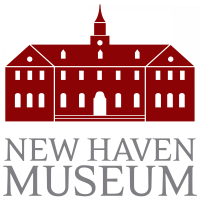Elm City: The Heartbeat of Connecticut is an 85 minute documentary told through the voices of those who lived it. It is a story of migration and memory, of neighborhoods built and broken, of battles fought in classrooms and on city blocks — and of the resilience that still defines New Haven today.
They grew up in a three-family house on Cedar Street — a home filled with love, laughter, and neighbors who felt like family. Doors were left unlocked, children played in the street, and the community looked after its own. Then the city came with eminent domain, tearing it down and leaving only a park in its place. The story of New Haven is written in families like theirs, spanning generations who turned hardship into legacy.
In The Hill, parents sat in classrooms beside their children to demand a real education. Neighbors organized to repair broken schools, fought displacement, and refused to let their blocks and curbs be taken without a voice. In Fair Haven, before cell phones, you could knock on a friend’s door and be welcomed inside. It became a landing spot for immigrants from more than sixty countries, where twelve languages were spoken and cross-cultural bonds formed simply by being present in the moment.
In West Hills and West Rock, residents organized as the Concerned Citizens, confronting violence and, over years of persistence, helping families move out of the projects, buy homes, and build self-sufficient lives. In Dixwell, where Black students were once denied entry to the Stetson Library, today the same branch is led by a Black woman, a powerful symbol of change across generations. And in Newhallville, the loss of industry left behind walls and fences where jobs once stood — but it also sparked new organizing, new leadership, and a renewed fight to shape the neighborhood’s future.
Everywhere, everyday life persisted. Children caught butterflies in jars, played double dutch until the streetlights came on, and gathered at community centers that anchored entire blocks. Along the harbor, Long Wharf bustled with ships and trade, connecting New Haven to the world. It was also where a bold dream took shape: the nation’s first Black college, imagined in 1831, that could have changed history — but was struck down before it could open.
Elm City the Heartbeat of Connecticut
Film Screening



